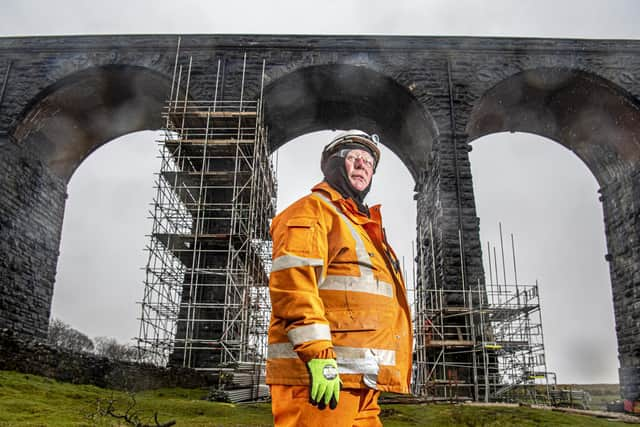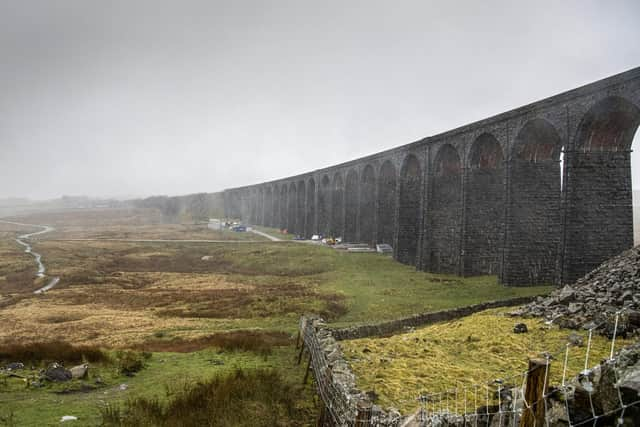Ribblehead Viaduct given new lease of life as £2.1m restoration project finishes after months of work
And the world-renowned piece of railway architecture has now been given a new lease of life after a £2.1m restoration project has been finished following months of specialist repairs.
From today, visitors will be able to witness the viaduct’s 24 arches once again in their full glory amid hopes that the completion of the works will help boost tourism on the Settle to Carlisle railway line.
Advertisement
Hide AdAdvertisement
Hide AdSince November, scaffolding towers have moved across seven of the arches to carry out masonry, drainage and repainting work on the Grade II*-listed structure.The investment by Network Rail as part of the Great North Rail Project will secure the viaduct’s future as both a historical landmark and a vital railway link.


The work has been completed ahead of the easing of coronavirus lockdown restrictions this spring ready for the expected rise in staycations during the summer.
A surge in visitor numbers has been forecast for the Yorkshire Dales National Park, with the Ribblehead Viaduct among one of its major attractions.
Network Rail’s principal programme sponsor Philippa Britton said: “The teams have worked throughout a harsh winter to restore this hugely important and impressive piece of Victorian engineering for the future and I’m hugely proud of the work we’ve carried out as part of the Great North Rail Project.
Advertisement
Hide AdAdvertisement
Hide Ad“We’ve worked incredibly closely with heritage experts and conservationists to make sure the repairs were sympathetic to the historical structure, but would also last the test of time. Now these once-in-a-generation repairs are complete, we hope you won’t see scaffolding on this scale at Ribblehead again for many decades to come.”


The viaduct provides an important transport corridor for local people, tourists and freight, carrying the Settle to Carlisle railway across Batty Moss.
The renovation works will make journeys more reliable for passengers on Northern trains and tourism charter services such as the Staycation Express, which launched in the summer last year.
Detailed laser and drone surveys were also carried out on the viaduct for the first time, giving a detailed record of its condition so it can be closely monitored in the future.
Advertisement
Hide AdAdvertisement
Hide AdIn February, plans were submitted to the Yorkshire Dales National Park Authority to fix minor faults found during the course of the planned work. Permission was granted so these repairs could be completed as part of the same project. Detailed inspections of the viaduct are carried out every six years, while major works are carried out each decade.
Stretching for 440 yards, the Ribblehead Viaduct’s 24 arches sweep through the Three Peaks region of Yorkshire Dales National Park.
The structure is 104ft high, and was built between 1870 and 1875 before it was opened to passengers on May 1, 1876.
During the 1980s, British Rail had proposed closing the Settle to Carlisle line. However, after lobbying by the public against closure, it was announced in 1989 that the line would be retained.